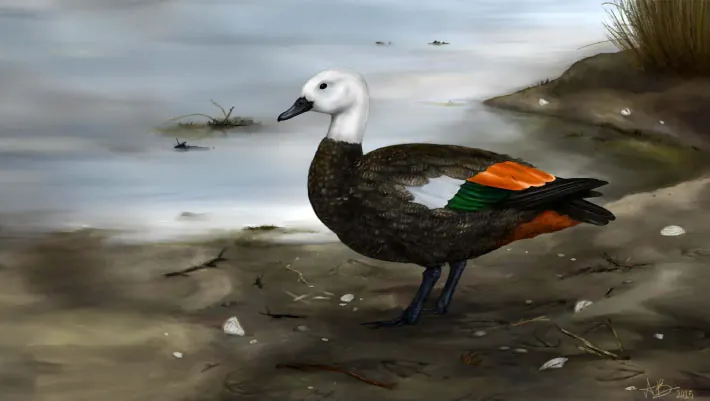
Meet the Rēkohu Shelduck: An Extinct Species That Thrived on the Chatham Islands!
2025-08-26
Author: Nur
A Paleontological Marvel Unearthed
Excitement erupts in the world of paleontology as a groundbreaking discovery reveals a new species of extinct shelduck that once roamed the isolated Chatham Islands! A dedicated team of scientists from New Zealand and Australia has identified the Rēkohu shelduck (Tadorna rekohu) from fossil bone deposits dating back to the Holocene.
Where Did This Duck Call Home?
The stunning Chatham Islands, located 785 km to the east of New Zealand's mainland, served as the playground for this unique bird. This archipelago includes several islands, such as Rangihaute Pitt and Maung’ Re Mangere, all of which were submerged during the Late Miocene to Early Pliocene before tectonic forces brought them back to the surface less than 3 million years ago.
A Journey Through Time: 390,000 Years!
The ancestors of the Rēkohu shelduck made their way to these islands around 390,000 years ago during the Late Pleistocene. While it might seem like a relatively short time in the grand scheme of evolution, it was significant enough for the species to undergo major adaptations.
From Flying High to Grounded
Dr. Nic Rawlence from the University of Otago highlights fascinating evolutionary trends: "Over time, the Rēkohu shelduck developed shorter, sturdier wings and longer bones, signaling its path towards flightlessness." Such changes were propelled by abundant food sources, the absence of predators, and the windy conditions of the islands, making flight unnecessary.
The Science Behind Evolution
In an enlightening statement, Dr. Pascale Lubbe notes, "Flight is energetically expensive, so if a bird doesn’t need to fly, there’s no reason to keep those wings intact." This led the Rēkohu shelduck to evolve robust leg bones to support its heavier body, compensating for its diminishing wings.
A Family Connection
Using ancient DNA and detailed bone analysis, researchers reveal that the Rēkohu shelduck is most closely related to the pūtangitangi paradise shelduck (Tadorna variegate) found in New Zealand. Unlike its more aerial cousin, the Rēkohu shelduck spent most of its time on the ground.
A Tragic End Before the 19th Century
Sadly, this fascinating species met its demise before the 19th century. The existence of Rēkohu shelduck bones in early Moriori midden deposits points to over-hunting as a significant cause of extinction, occurring even before European and Māori settlers arrived.
Published Findings
The researchers' remarkable findings have been documented in the July 2025 issue of the Zoological Journal of the Linnean Society, offering a profound glimpse into this lost world. This discovery not only enriches our understanding of insular species but also sheds light on the delicate balance of ecosystems.



 Brasil (PT)
Brasil (PT)
 Canada (EN)
Canada (EN)
 Chile (ES)
Chile (ES)
 Česko (CS)
Česko (CS)
 대한민국 (KO)
대한민국 (KO)
 España (ES)
España (ES)
 France (FR)
France (FR)
 Hong Kong (EN)
Hong Kong (EN)
 Italia (IT)
Italia (IT)
 日本 (JA)
日本 (JA)
 Magyarország (HU)
Magyarország (HU)
 Norge (NO)
Norge (NO)
 Polska (PL)
Polska (PL)
 Schweiz (DE)
Schweiz (DE)
 Singapore (EN)
Singapore (EN)
 Sverige (SV)
Sverige (SV)
 Suomi (FI)
Suomi (FI)
 Türkiye (TR)
Türkiye (TR)
 الإمارات العربية المتحدة (AR)
الإمارات العربية المتحدة (AR)